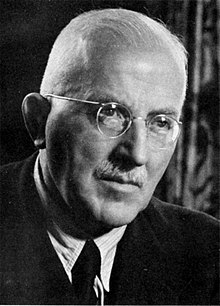Hermann Staudinger
| Hermann Staudinger | |
|---|---|
 |
|
| Born |
23 March 1881 Worms, Germany |
| Died | 8 September 1965 (aged 84) Freiburg, West Germany |
| Nationality | German |
| Fields | Organic and Polymer chemistry |
| Institutions |
University of Strasbourg University of Karlsruhe ETH Zürich University of Freiburg |
| Alma mater | University of Halle |
| Doctoral advisor | Daniel Vorländer |
| Doctoral students | Lavoslav Ružička |
| Known for | Polymer chemistry |
| Notable awards | Nobel Prize in Chemistry |
| Spouse | Magda Staudinger (née Woit) |
Hermann Staudinger (23 March 1881 – 8 September 1965) was a German organic chemist who demonstrated the existence of macromolecules, which he characterized as polymers. For this work he received the 1953 Nobel Prize in Chemistry. He is also known for his discovery of ketenes and of the Staudinger reaction.
Hermann Staudinger was born in 1881 in Worms. After receiving his Ph.D. from the University of Halle in 1903, Staudinger took a position at the University of Strasbourg.
It was here that he discovered the ketenes, a family of molecules characterized by the general form depicted in Figure 1. Ketenes would prove a synthetically important intermediate for the production of yet-to-be-discovered antibiotics such as penicillin and amoxicillin.
In 1907, Staudinger began an assistant professorship at the Technical University of Karlsruhe. Here, he successfully isolated a number of useful organic compounds (including a synthetic coffee flavoring) as more completely reviewed by Rolf Mülhaupt.
In 1912, Staudinger took on a new position at the Swiss Federal Institute of Technology in Zurich, Switzerland. One of his earliest discoveries came in 1919, when he and colleague Meyer reported that azides react with triphenylphosphine to form phosphazide (Figure 2). This reaction – commonly referred to as the Staudinger reaction – produces a high phosphazide yield.
...
Wikipedia
